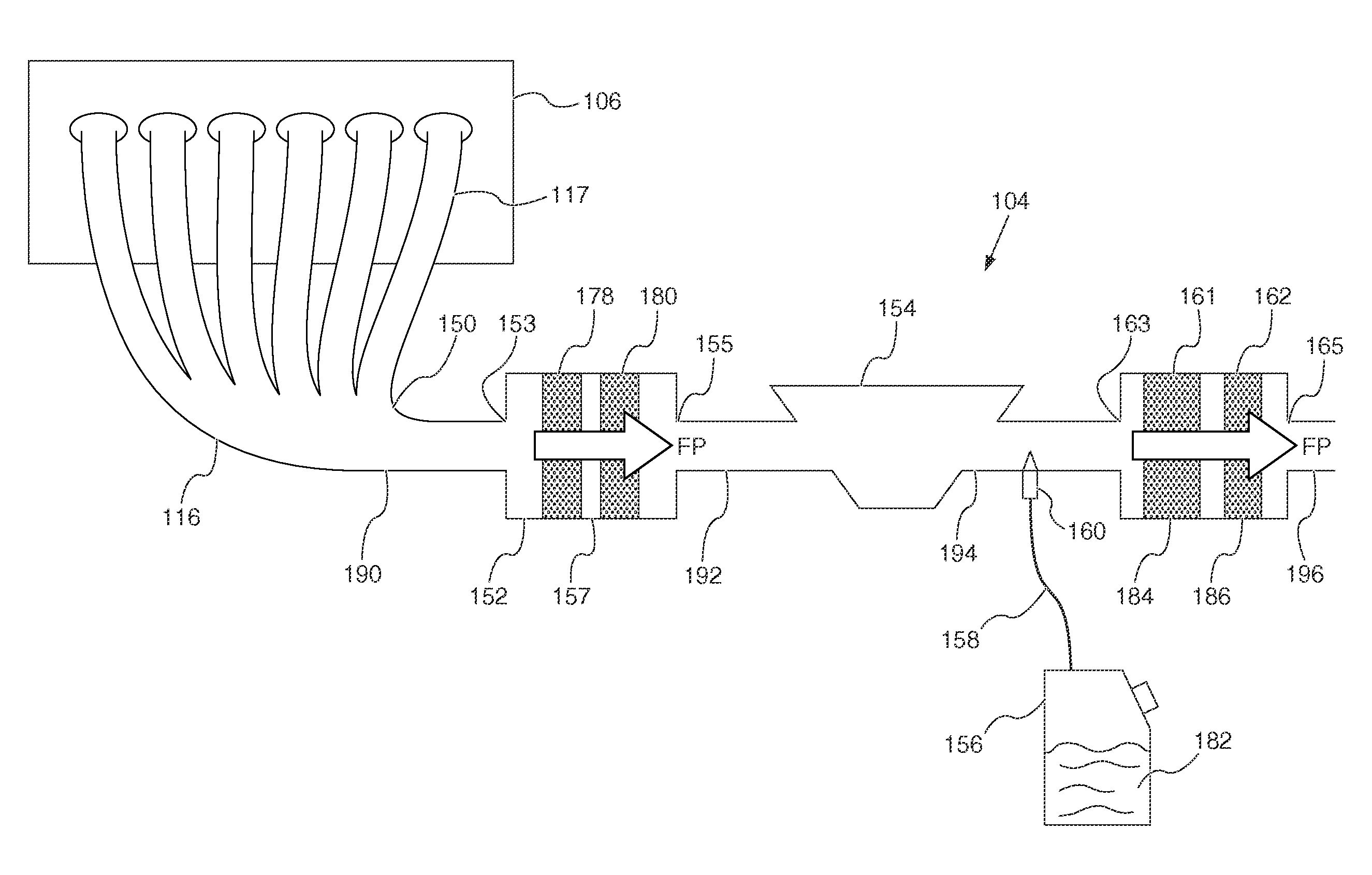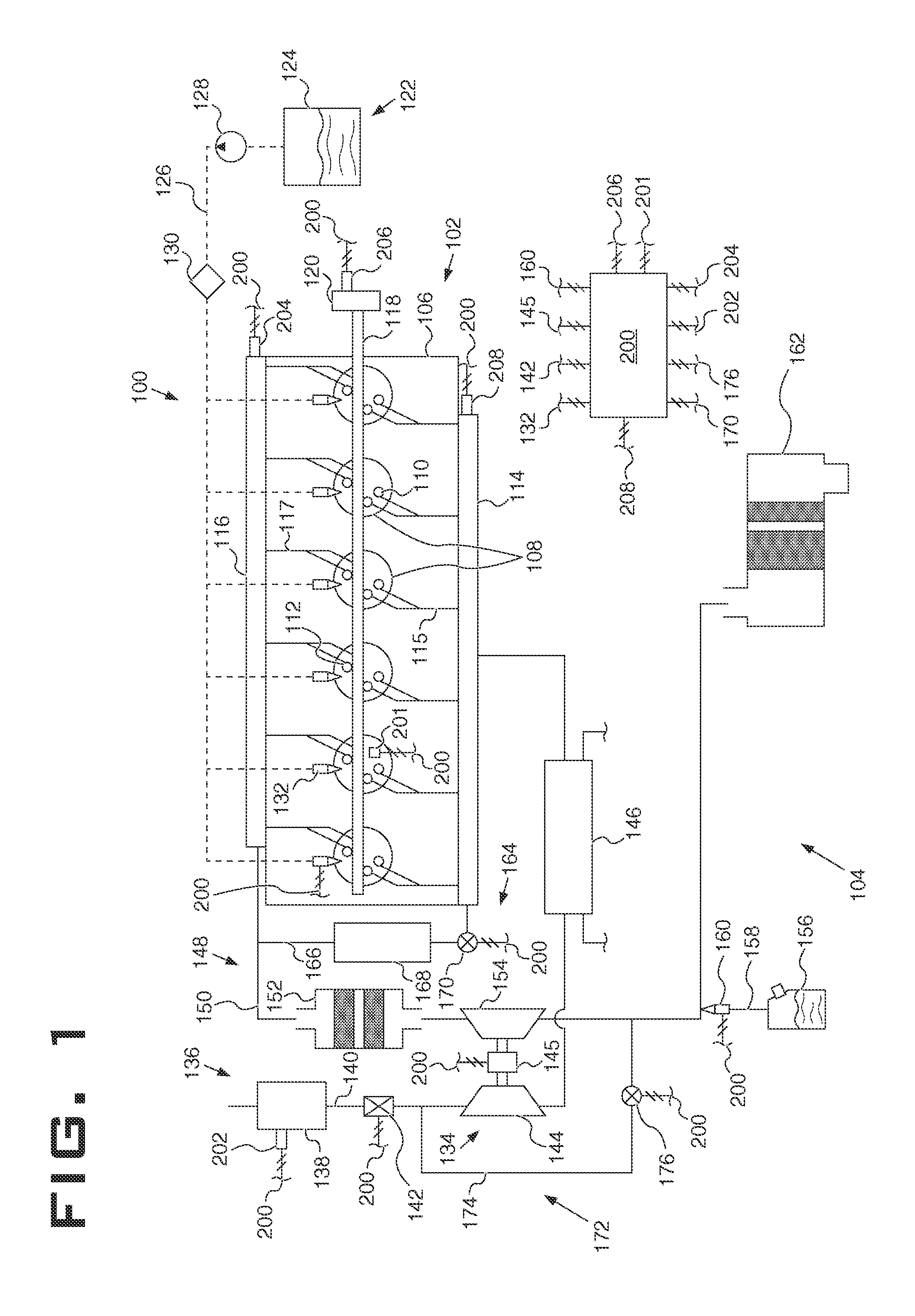Exhaust aftertreatment system and method
- Summary
- Abstract
- Description
- Claims
- Application Information
AI Technical Summary
Benefits of technology
Problems solved by technology
Method used
Image
Examples
first embodiment
[0030]In the first embodiment, a high-pressure EGR system 164 operates to direct high-pressure exhaust gasses to the intake manifold 114. The high-pressure EGR system 164 includes a high-pressure EGR line 166 that communicates with the exhaust line 150 downstream of the exhaust manifold 116 and upstream of the pre-turbine module 152 and the turbine 154 to receive the high-pressure exhaust gasses being expelled from the combustion chambers 108. The system is thus referred to as a high-pressure EGR system 164 because the exhaust gasses received have yet to depressurize through the pre-turbine module 152 and the turbine 154. In an alternative embodiment the high-pressure EGR line 166 may communicate with the exhaust line 150 downstream of the pre-turbine module 152 and upstream of the turbine 154. The high-pressure EGR line 166 is also in fluid communication with the intake manifold 114. To control the amount or quantity of the exhaust gasses combined with the intake air, the high-pres...
second embodiment
[0031]In the second embodiment, a low-pressure EGR system 172 directs low-pressure exhaust gasses to the intake line 140 before it reaches the intake manifold 114. The low-pressure EGR system 172 includes a low-pressure EGR line 174 that communicates with the exhaust line 150 downstream of the turbine 154 so that it receives low-pressure exhaust gasses that have depressurized through the pre-turbine module 152 and the turbine 154, and delivers the exhaust gasses upstream of the compressor 144 so the exhaust gasses can mix and be compressed with the incoming air. The system 172 is thus referred to as a low-pressure EGR system 172 because it operates using depressurized exhaust gasses. To control the quantity of exhaust gasses re-circulated, the low-pressure EGR line 174 can also include a low pressure EGR valve 176.
[0032]To coordinate and control the various systems and components associated with the engine system 100, the system 100 can include an electronic or computerized control ...
PUM
| Property | Measurement | Unit |
|---|---|---|
| Temperature | aaaaa | aaaaa |
| Pressure | aaaaa | aaaaa |
| Flow rate | aaaaa | aaaaa |
Abstract
Description
Claims
Application Information
 Login to view more
Login to view more - R&D Engineer
- R&D Manager
- IP Professional
- Industry Leading Data Capabilities
- Powerful AI technology
- Patent DNA Extraction
Browse by: Latest US Patents, China's latest patents, Technical Efficacy Thesaurus, Application Domain, Technology Topic.
© 2024 PatSnap. All rights reserved.Legal|Privacy policy|Modern Slavery Act Transparency Statement|Sitemap



